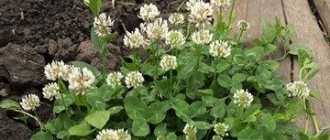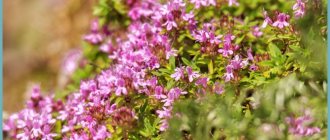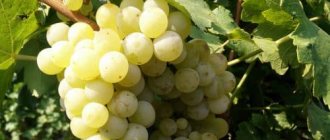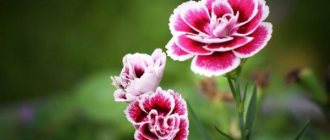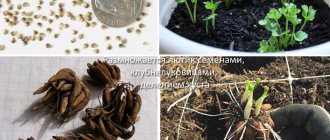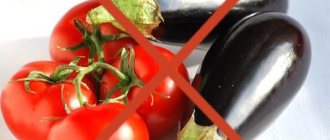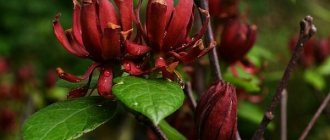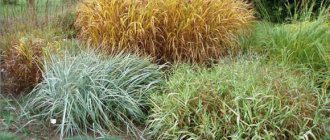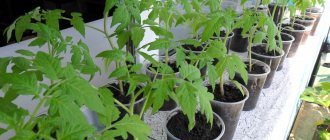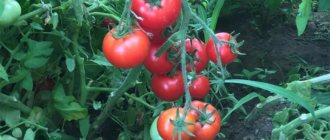Creeping bitterweed (pink) is a perennial plant of the Asteraceae family, which has a reputation as an extremely dangerous weed. Gradually taking over the territory where it has settled, the bitterling displaces its cultivated neighbors, significantly reducing their productivity, as well as the quality of the soil. This is a real threat to agricultural land and gardens, the appearance of which is being fought in many countries. In Russia, bitterweed belongs to the group of quarantine objects, the spread of which is subject to special control.
general characteristics
In English-language sources, this weed is often found under the name “Russian knapweed”. Indeed, in appearance, creeping bitterweed, a photo of which can be seen below, is very similar to certain types of cornflowers. Typically the plant reaches a height of up to 75 cm. Its branched stems with numerous oblong leaves are crowned with dark pink flower baskets that bloom in July and bloom until August.
Creeping bitterling is a fairly unpretentious plant. It loves warmth and light, and is very resistant to drought. Its roots can grow to a depth of more than 10 meters and feed on moisture that is not available to other plants. In addition, this weed perfectly tolerates soil compaction and the accumulation of harmful salts in it: carbonates, chlorides, sulfates. The only thing that bitterling does not like is flooding the soil, so it does not grow in rice fields.
Distribution and reproduction
Central Asia is considered the homeland of bitterling. From there it came to the North American continent, gradually spreading to Canada and the United States of America. The plant was also brought to Europe - there are pockets of its growth in Russia, Ukraine, Kazakhstan, Georgia, Azerbaijan, Poland, Germany and other countries. The insidious weed has even reached Australia! The only continent where bitterling has not been found to date is Africa. In Russia, it is found mainly in the southern and southeastern regions, most often in the steppe zone. It grows in cultivated and uncultivated lands, meadows, gardens, pastures and populated areas.
The weed has a powerful root, which consists of vertical rhizomes from which horizontal shoots grow. It reproduces both by seeds and vegetatively - through the development of rhizomes and root shoots. In a year, one plant can spread over an area of up to six square meters. Creeping mustard grows in clumps, that is, in dense thickets - from several dozen to hundreds of stems per 1 square meter.
Biological characteristics and harm
Thanks to its root system, bitterling has the ability to absorb several (from two to five) times more nutrients from the soil than other plants. It is difficult for many crops to withstand the onslaught of a gluttonous neighbor - the soil dries out and becomes unsuitable for growth. Therefore, as it develops, bitterling occupies from 50 to 80% of the territory, displacing other species.
In addition, the plant is poisonous! Its roots secrete phenol derivatives, which accumulate in the soil and contribute to poor crop growth. The above-ground parts of bitterling secrete organic substances that suppress the development of neighboring plants. Even if crops manage to bear fruit next to this weed, the quality of the resulting product deteriorates sharply. For example, if the grain harvest contains bittersweet seeds in an amount of 0.01% by weight, then the flour produced from such raw materials will be of low quality due to bitterness.
The toxins contained in the weed make it unsuitable and dangerous for animal nutrition. The milk of cows that have eaten bitter bitter takes on a bitter taste. And for the lives of horses, creeping bitterweed can even pose a threat!
Fight from spring to autumn
The flowers look like lilac cornflowers.
Photo: agroxxi.ru Description of creeping bitterweed:
- Gorchak (lat. Acroptilon repens) is a root-sprouting perennial plant with a developed rhizome system. Vertical roots penetrate to a depth of 16 m, horizontal roots form a multi-sprouted network that fills large areas. The plant infests agricultural crops and depletes the soil.
- Gorchak reproduces by seeds and rhizomes. The germination of seed material in the soil lasts up to 5 years. The plant reaches new places with grain, hay and straw. In one year, one mother plant can grow into a clump with a diameter of 5-6 m. Gorchak tolerates drought well, drawing moisture from the deepest layers of the earth.
- The stem of the plant is straight, branches at the base, 50-70 cm high. Each stem produces a crimson-pink inflorescence with a diameter of 1-1.5 cm. All flowers are the same size, bisexual, tubular. The plant blooms in June-July and bears fruit in July-August. The mother rosette does not bloom or produce fruit in the first year. Seed germination requires high humidity and temperature. With vegetative propagation, plants quickly gain strength and produce numerous dense shoots.
- Root shoot weed is a light-loving plant ; in the shade, rosettes do not form seeds, and the root system slows down development. Creeping bitterweed is extremely harmful. When it gets into livestock feed, it changes the taste of milk and reduces crop yields by 50-70%. The weed's root system is capable of absorbing 2-5 times more nutrients from the soil than the roots of cultivated plants.
- It has been observed that creeping bitterweed actively grows on cultivated arable lands and stops growing, literally until it completely disappears in abandoned fields, unable to withstand competition with other grasses. Creeping bitterweed is a quarantine weed. If large outbreaks are detected on arable land, it is necessary to notify Rosselkhoznadzor about the contamination of the territory.
In the photo, a native of Central Asia - Creeping Gorchak.
Photo: agrostory.com The author of the video claims that within 5 years Gorchak is able to displace all cultivated plants growing near it. The weed draws moisture and nutrients from the ground, thereby drying out the soil completely:
What makes the fight so difficult?
Gorchak is deservedly considered one of the most difficult to eradicate weeds, since it has the ability to wait out a period of unfavorable conditions in a dormant state. When the soil dries out or the area where bittergrass grows has been plowed, its above-ground parts, as well as the roots located directly underground, die. However, deeper roots retain the ability to live for several years, and when normal conditions return, the plant begins to actively revive.
farmland thunderstorm
Farmers are sounding the alarm and believe that bitterling can pose a threat not only to food security, but also to environmental security. It is very difficult to fight it, so task No. 1 is to prevent its appearance and spread. One of the ways bittergrass contaminates the soil is when its seeds get in with the seeds of cultivated plants, so it is important to sow the soil with clean material. For this purpose, Rosselkhoznadzor specialists, as part of phytosanitary control, check grain and seeds transported and imported into Russia for the presence of bittergrass seed.
How to fight on your own?
From the above, it is clear that it is extremely difficult to resist this weed alone. What should a person do if he finds this ill-fated plant in his garden? The fight against creeping bitterweed in a summer cottage includes a number of measures that should be carried out in combination. Single instances must be removed manually, including its underground parts. If thickets of bitterling are found, they must be completely mowed before flowering begins. Before preparing the soil for sowing, it must be thoroughly plowed, cutting off the roots of the plant as deeply as possible. It is recommended to do the same in late autumn. If the site has not yet been developed, it is better to do the procedure several times. The cut sections of the roots must be selected and destroyed. However, it is quite possible that these measures will not be enough and soon the bitterweed will again begin to attack the area.
It's all about the repeatedly mentioned root system, which allows the weed to revive even after 3-4 years. To completely defeat creeping bitterweed, it is additionally recommended to use chemicals - the herbicides Roundup and Hurricane. It is best to apply them on a warm and dry, but cloudy autumn evening, when the entire harvest has already been harvested. The application method is quite simple and boils down to spraying the stems with a solution of the drug. It is described in more detail in the instructions for the specific herbicide. It is likely that chemical treatment will have to be repeated several times to completely destroy the harmful plant.
In conclusion, let us remind you that bitterling is a quarantine weed, and if it is detected, you must inform the local branch of Rosselkhoznadzor! For failure to comply with this requirement established by law, you can receive a fine - this applies to both legal entities and ordinary citizens!
Gardeners have to face numerous problems while growing plants. Weeds are one of the key problems. And today I will tell you about creeping bitterweed. A very harmful plant that many have encountered, but in addition to its negative traits, it also has positive ones, so do not rush to remove it from the garden and throw it in the trash. I will tell you how you can use this plant to your advantage.
In order for you to better understand the issue, I will tell you about creeping mustard; photos and descriptions in all details will also be given. Read them carefully and you will have no more questions.
Creeping bitterweed - a dangerous weed
05/07/2019 Creeping bitterweed ( lat. Rhaponticum repens
) is a perennial root shoot plant of the Asteraceae family and is one of the most malicious and difficult to eradicate weeds. For this reason, in many countries around the world it is included in the list of dangerous quarantine objects.
The habitat of creeping mustard was originally the steppe zones of Central Asia, from where the plant was later introduced into many regions with arid climates (for example, Australia, the United States, and the southern part of the European continent).
Despite the quarantine and sanitary measures taken by special services, today in Ukraine the total area of agricultural land infested with mustard has already reached more than 300 thousand hectares, posing a real threat to the entire steppe zone of the country.
Creeping mustard grows both on arable land, in orchards, orchards and vineyards, and in uncultivated areas: wastelands, meadows, pastures, near highways and dirt roads, along railway tracks.
The plant has a well-developed and powerful root system that can penetrate deep into the ground up to 10 meters. At the same time, the weed absorbs moisture and nutrients 5 times faster than, for example, the same cereal crops.
Thanks to this feature, the weed can use groundwater that is inaccessible to other plants. In addition, creeping mustard secretes special substances (phenol derivatives, as well as repin, acrotilin and hircanin), which pose a danger to many cultivated plants, since they inhibit their growth and development, delaying (inhibiting) the most important physiological and physicochemical processes.
Thanks to this feature, bitterling can reduce crop yields by up to 70%. At the same time, the plants located at the epicenter of its root system are suppressed so much that they may not sprout at all.
The leaves and stems of creeping bitterweed contain poison and therefore pose a threat to the lives of many animals (especially horses). However, some species, including goats and sheep, tolerate its effects quite resiliently.
The weed usually spreads along with contaminated grain, straw, hay, meal, or along with vehicles and equipment.
In addition, bitterling seeds, passing through the gastrointestinal tract of animals, do not have time to be digested, and therefore do not lose their vitality and ability to germinate.
Description of creeping bitterweed
The plant has a branched, faceted, pubescent stem and can reach a height of 70 centimeters.
The root system consists of a vertical rod and horizontal roots and rhizomes extending in all directions.
Leaves are sessile, alternate serrated or dissected.
The process of flowering and fruiting begins in the second year of life (July-August).
The flower basket is single, round in shape and about one centimeter in diameter. It is located, as a rule, at the ends of branches.
The flowers in the basket are tubular, bisexual, with a pinkish or light lilac tint.
The fruit is a smooth, ovoid achene with a tuft. The seeds reach a length of 3.5 millimeters.
Creeping mustard spreads both by root suckers and by seeds, which have the ability to maintain a high degree of germination for up to five years.
A weed grown from a seed demonstrates good persistence and has a longer life cycle than a plant grown from a root sucker. At the same time, he prefers moist soil, well-lit places and high air temperatures.
During the first year, creeping bitterweed does not shed flowers or produce seeds, since its above-ground part grows very slowly. For example, during three months of growing season the plant only manages to form a rosette consisting of 5-7 leaves. But the root system of the weed during this time grows over an area of up to 6 meters, penetrating to a depth of about two meters.
As it develops, the roots of bitterling gradually thicken, forming a large number of adventitious underground shoots, which form powerful rhizomes (at a depth of 20 to 60 centimeters) and dense clumps around the mother plant.
By the end of the second year, the weed can occupy an area of up to 12 (!) square meters.
Ways to control weeds
A preventive means of combating creeping mustard includes, first of all, careful processing and cleaning of seeds of cultivated plants, and primarily cereals, such as wheat, oats, barley and millet.
An effective way to protect against weeds is considered to be a combination of black fallow and continuous sowing plants, which include rye, barley, alfalfa, oats, and which are capable of suppressing creeping mustard with well-developed and voluminous green mass.
A good effect is demonstrated by constant mowing of weed thickets, which must begin even before the plants begin to flower, in order to prevent the transfer of seeds to new areas along with melt water or rain streams. It is advisable to destroy the mown mass by fire.
An effective method in the fight against creeping bitterweed is regular pruning of its root system, as well as post-harvest stubble peeling, followed by deep autumn plowing and the rise of black fumes in the autumn.
As for the use of herbicides, preparations based on imazapyr, such as Arsenal, Ac, Grader, Imperial and others, most effectively destroy the root system of the weed.
General characteristics
In some cases, this plant is called pink mustard. It is a perennial plant and belongs to the Asteraceae family. Gardeners know this plant as a very tenacious weed that is difficult to remove from your favorite beds. The reason for the vitality of the plant is that it has a very strong and developed root system. It spreads over a huge area, therefore, destroying bittergrass on the surface does not contribute to its complete removal from the territory, because due to the preservation of roots, it will soon begin to grow on the surface again.
This plant can reach up to 80 cm in height. The flowering part of the plant is similar to a basket, which has a pink tint (which is why the second name appeared).
Gorchak likes to grow in dry soil, in areas that receive the maximum amount of sunlight.
Chemical composition of creeping bitterweed:
The plant has been little studied; it contains alkaloids, resin and essential oil. The roots contain the complex carbohydrate inulin, which decreases in spring. With the onset of the stemming phase and before the start of budding, its quantity increases to the original level. The largest amount of inulin accumulates in the phase of dying of the above-ground mass, almost twice as much as compared to the initial level.
Article on the topic: Marsh saxifrage - useful properties, description
All these active ingredients form the basis of the chemical composition of European heliotrope (lichen herb).
How to grow?
When growing this plant, you need to remember the following:
- Bitterweed is a weed plant, so it must be planted in such a way that it does not spread to unnecessary territory and does not cause inconvenience to other plants.
- The seeds of this plant are not sold, but you can find them yourself at plant screening sites.
Pepper bitter use.
All above-ground parts of the plant have medicinal use - the “grass” as a good hemostatic agent.
Water pepper has long been used in folk medicine as an anti-hemorrhoidal remedy.
It is used externally to cause redness in the skin and as an analgesic poultice for tumors.
Water pepper was introduced into scientific medicine by Russian scientists - pharmacist Piotrovsky and prof. Kravkov in 1913. They were the first to draw attention to the outstanding hemostatic properties of water pepper. It is stronger than ergot and American golden seal, or hydrastis.
Later, on the initiative of prof. Kravkova, water pepper began to be used as a means of pain relief and reduction of various nervous phenomena.
How to fix it?
If you are not a supporter of traditional medicine, then this plant is of no value to you; it is a weed that needs to be eliminated. In order to successfully cope with this task, you must follow these recommendations:
- Bitterweed must be eliminated, because it actively absorbs nutrients and kills soil fertility. It becomes simply impossible for other cultures to grow and develop. This weed plant causes damage not only to other crops, but also to animals. Important! It is very quickly necessary to remove the plant from the soil where cereal crops grow, since the plant will release substances that will negatively affect them and the cereal crops will become bitter during subsequent use.
- The seeds of this weed are extremely tenacious; high temperatures and composting are required to destroy them. This exposure should last at least four months, only then will the plant seeds be destroyed.
- The plant can be eliminated using a bitter-type nematode. This disease causes swelling in the plant and as it develops, it eliminates bitterness. In order to get rid of the weed in this way, you need to find a bitterweed that is affected by this disease, plant it near uninfected plants, and over time they will also get this disease. Important! Don't expect the disease to spread quickly and the bittergrass to be eliminated. This process may take several months.
- This weed can be eliminated using special chemicals. It is necessary to choose preparations of continuous action, but only after the harvest has been harvested, otherwise there is a risk of removing not only the weed plant, but also all the useful crops that have been so carefully grown all this time. For example, you can use the Hurricane product. When using the drug, you need to adhere to the following ratio: 10 mg per 5 liters when used over an area of 100 square meters.
- This weed plant is very difficult to eliminate, so it is necessary to use complex control measures, that is, use both biological and chemical agents. Use them repeatedly because it will take a long time to completely eliminate this weed.
Hawk dove, bitterling – medicinal plant
The hawk dove, translated as Picris hieracioides, is a herbaceous biennial plant, its other names are: hawk dove, hawkweed, bellweed, forest gormokha, milkweed, falcon gentian, spurge, falcon bitter, chicorn, gentian, tree, snake, cube.
The minimum length of the stem is thirty centimeters, and the maximum reaches one meter; it is covered with hard, hooked hairs. Its leaves are lanceolate in shape, with slightly notched-toothed edges; while the upper ones are stem-embracing; the lower ones taper into a petiole.
The flowers are yellow in color and are collected in the form of a loose corymbose panicle. The fruit is shaped like an achene with longitudinal ribs. The flowering of the hawk dove begins around July.
The Hawk Dove can be seen in the European part of Russia, as well as in Siberia. The plant is localized mainly along roads, it can be found in fields and among bushes, and its habitat is also weedy areas and slopes.
• Part of the Hawk Dove used
The part of the plant used includes its grass, which includes the stems, leaves and flowers of the turtle dove. They contain chemical compounds, among which we can note the presence of flavonoids, rubber, sesquiterpenoids, and a number of other substances.
• Collection and procurement of raw materials
In order to prepare turtle dove grass, you need to take sharp scissors with you, as it will be convenient to cut off the required amount of raw material with them; it is better to cut it not near the ground, but three, five centimeters higher from the soil, and it is recommended to choose healthy ones, not withered specimens of the plant. After which they should be cut into small pieces and placed in an automatic drying chamber.
Article on the topic: Field mustard - beneficial properties, description
In an automated dryer, the hawk dove herb will be cooked quite quickly and with better quality. In this unit you can set any temperature, in our case it should not exceed forty or fifty degrees. After the raw material has completely dried, it is laid out in paper or cloth bags, but compacting it is not recommended.
Bags with finished raw materials are placed in a ventilated and dry room. And they are stored for no more than two years; after this time, it is not recommended to use the herb, since it will no longer have the necessary medicinal effect on the body.
Medicines are prepared from this plant, which have found their use among traditional healers. Infusion and decoction prepared from hawk dove have a mild laxative and analgesic effect on the body, and also have a choleretic and diuretic effect.
The drugs are used for diseases of the liver and gall bladder. They are also used externally, they are used to make poultices, lotions, they are used to wash the wound surface, they help relieve the inflammatory process, and also have an analgesic effect for bruises, ulcers and abrasions.
You can prepare a poultice, which is recommended to be applied to inflammatory lesions on the skin, for example, to boils. To do this, you will need to take 15 grams of herb, it can be either fresh or dry, after which it needs to be crushed in a mill or mortar.
Next, the resulting crushed raw material must be placed on a double layer of gauze and formed into a bag. After which it is recommended to scald it with boiling water, or better yet, keep it in hot water for about thirty seconds. Then it needs to be cooled.
After the lotion has cooled, it is applied to the inflamed boil for about ten minutes, this procedure is carried out until the inflammatory process subsides. As a result, this formation will gradually resolve and heal.
You can prepare a medicinal infusion from the milkweed herb. To do this, you will need a tablespoon of turtle dove raw material; it is recommended to grind this herb in a mill, then pour it into a ceramic bowl, into which you need to pour 250 milliliters of boiling water.
The container should be closed with a lid and left for at least one hour, after which the filtering procedure should begin. To do this, you can use gauze or a sieve through which you can strain the finished infusion. You need to get rid of the sediment in the form of herbal cake, and pour the finished infusion into a convenient container.
It is recommended to take the infusion no more than four times a day; taking a tablespoon of the drug will be enough. After which it must be immediately put into the refrigerator, since at a cool temperature its shelf life will be much longer.
Medicines prepared from the hawk dove can be used only after mandatory consultation with your doctor. It is not recommended to use medicinal herbs on your own; however, it is better to consult a doctor first in order to avoid any complications from the body.
Remember that any treatment must be carried out by a competent doctor. You should not delay your visit to the doctor, as you may miss valuable time and develop the disease, which will ultimately lead to the development of complications. Accordingly, trust your doctors, and if any symptoms appear, come see them.
Article on the topic: Brauncol (bruncol) - useful properties, description
